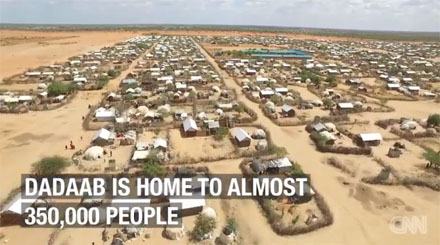
Soon after CNN International turned 30 years old this autumn, its user-generated platform iReport was significantly updated – highlighting a drive at the organisation to change with the times.
The new eyewitness media initiative, revealed earlier in November, is designed to help CNN better engage with people on the platforms they are already using, as "in a way, iReport was its own social media," said Andrew Demaria, vice president and managing editor of CNN Digital International.
Those who would like to share photos, videos and news tips with CNN are now advised to do so through Facebook, Twitter and other social networks using #CNNireport, while focus on uploads through the iReport portal has become secondary.
"What's important now is we're able to adapt to the behaviour of the audience," he said.
CNN has been one of the first news outlets to sign up for Snapchat's Discover initiative back in January, and more recently, to Notify, Facebook's app for news alerts.
"There has to be an element of risk with everything," Demaria told Journalism.co.uk. "I'm sure there are going to be some things that CNN embraces that probably aren't going to be as successful as others.
"You can't necessarily jump on everything but you can sort of hedge your bets on the things that make sense."
The organisation, Demaria explained, looks primarily to three elements for development: the mobile offering, newsgathering practices, and digital video. "And they are all intertwined," he added, with mobile video playing a key part.
Data at the centre of change
"What's trending now in terms of audience behaviour in 2015 is different to what it was in 2014... and different looking forward to 2016."
At CNN International, over 50 per cent of traffic comes from mobile devices – and this figure can jump to around 70 or 80 per cent during the weekends.
"There's a different sort of audience behaviour around mobile even on weekends," Demaria said, adding that understanding and adjusting to that behaviour is key.
Data has played an important role in taking CNN's legacy as a broadcaster and adapting that to new digital platforms. Analytics inform CNN of the subjects that attract most readers or viewers and could be transformed into individual verticals, such as CNN Style, which launched in July.
And the figures also inform newsgathering teams, helping them build engaging stories.
"With Nigeria, 80 per cent of our users get their content on mobile," highlighted Demaria as an example. "But then we start to factor in what things they're interested in, what sorts of videos they're watching, how can we present more of those videos, how can we make sure those videos suit how they're watching on mobile.
"So that's a very specific example of taking all those sort of data points and bringing them forward."
Harness the breadth of the audience
CNN's focus on cracking the code to produce successful mobile video has lead the organisation to experiment with formats, editing techniques and new technology.
The digital video offering now includes explainers around breaking news events and clips of drone footage, on top of traditional TV-style packages.

From the air: The world's largest refugee camp. Screenshot from CNN
An eye-catching video people watch on their smartphones could drum up interest in the subject, leading to audiences seeking out more coverage of the issue from CNN, whether online or on TV.
Another trick, Demaria said, is "looking at the elements that we got in the field that can sort of have a variety of different purposes to help tell that story and help present that picture".
London bureau chief Tommy Evans told Journalism.co.uk in March that many videos that were originally conceptualised for digital eventually run on TV as well.
"If it's a good story, then it will transcend platforms and it will work in multiple places," he said.
Experimenting with formats is also a way for CNN to engage with specific segments of its audience.
"We discovered that an explainer video about apartheid was extremely popular because it was hitting this demographic that hadn't actually lived through a lot of that," said Demaria.
"That's where we can't underestimate the breadth of our audience."
CNN's activity on Snapchat Discover also highlighted more unexpected audience behaviours – while some have raised concerns about the way news would fit in with the rest of the content on the messaging app, those who watch CNN's channel have a big appetite for hard news stories, revealed Demaria.
For CNN as for many news organisations, "social has broken down barriers," he said.
- Inga Thordar, editorial and programming director for CNN International Digital, will be speaking at news:rewired on 1 December about the broadcaster's approach to mobile news, alongside experts from the Guardian, The Washington Post and BuzzFeed News. Find out more here.
Free daily newsletter
If you like our news and feature articles, you can sign up to receive our free daily (Mon-Fri) email newsletter (mobile friendly).









